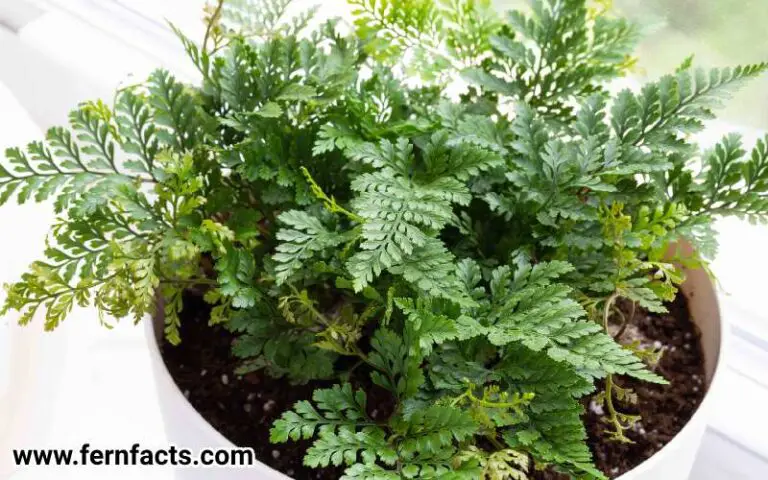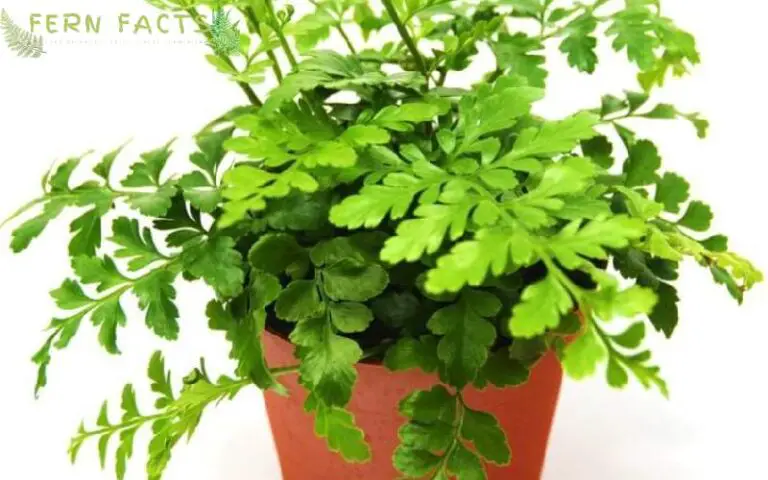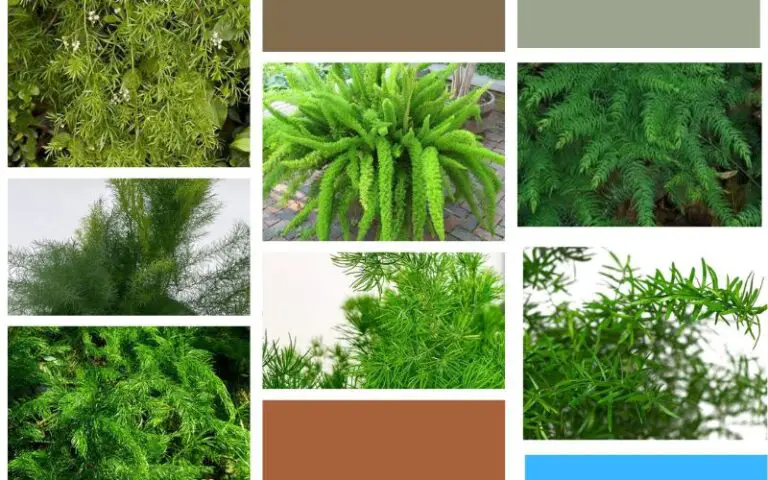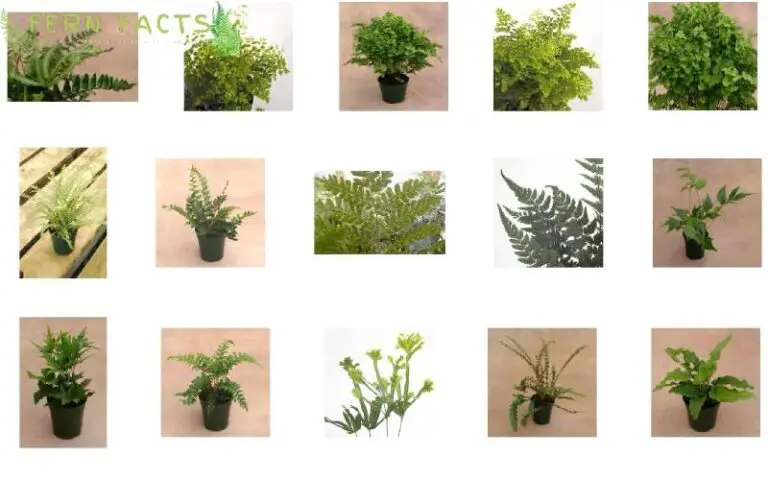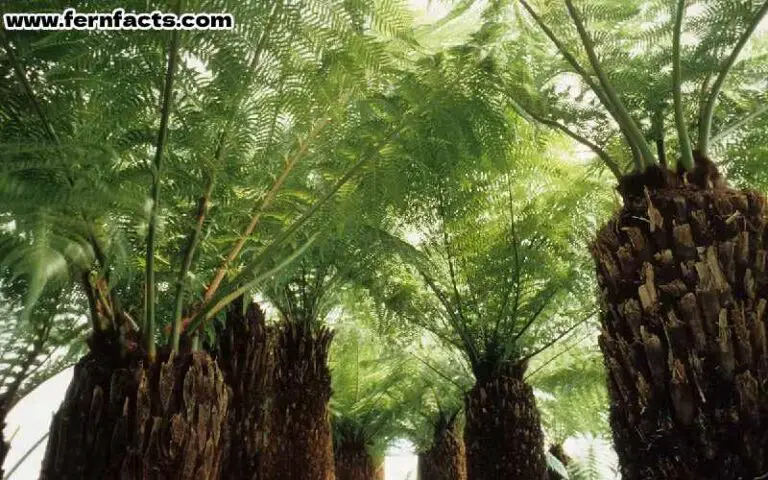Best Ferns for Alkaline Soil
If you have alkaline soil in your garden, and don’t have any idea what ferns or plants you will grow there. Then don’t be worried! This article will give you a head-to-toe solution of your problems regarding all of your problems.
In this article, I’ll provide an overall idea of what alkaline soil along with some suitable ferns for you to grow on this soil. Besides, I’ll also give you a list of those ferns that you should not plant in alkaline soil.
Lastly, I’ll conclude the article with some tips on improving your alkaline soil so that you can grow any plants you wish. So let’s delve into the topic.
What is Alkaline Soil?
Alkaline soils or alkali are clay soils that contain high levels of pH usually more than 8.5. This soil also contains physicochemical properties that dominate the presence of sodium carbonate (Na2CO3).
These minerals form topographical areas where a high content of limestone or chalk remains. That’s why it’s sometimes also called lime soil.
However, this soil is also recognized by some gardeners as sweet soil because this soil contains a good amount of sodium, calcium, and magnesium.
As these alkaline soils are less soluble than the normal acidic and neutral soil, therefore, nutrient deficiencies might be one common thing in these soils.
Best Ferns for Alkaline Soil
Alkaline soils are often considered hard to compose as this soil has a heavy quantity of clay with poor structure and nutrient deficiencies. However, there are plenty of ferns out there which are suitable for alkaline soil structure.
Hart’s Tongue Ferns
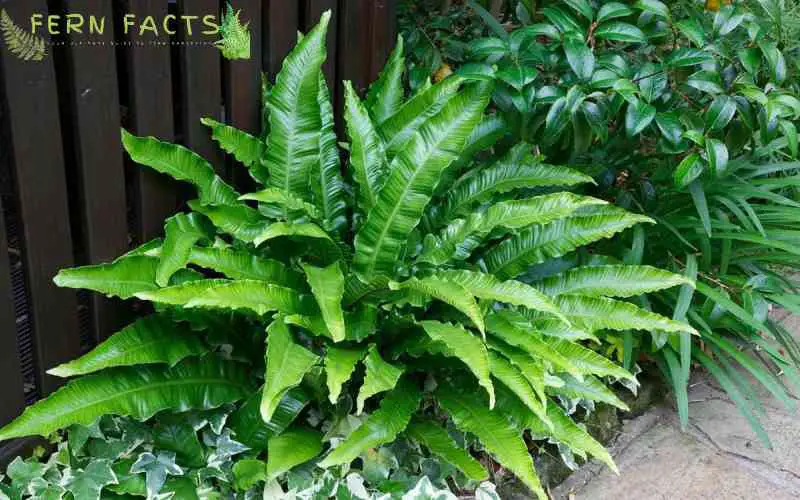
- Botanical name: Asplenium scolopendrium
- Plants: Evergreen
- Native range: Northern hemisphere
- Native habitats: moist soil, damp crevices
- Shade requirements: partial to full shade
- Height: around 0.5 m
- Soil: alkaline or neutral, moist and well drained
Hart’s tongue ferns are evergreen ferns that are widely distributed in the northern hemisphere. These ferns have the most unusual simple, strap-shaped undivided fronds.
The fronds of these ferns resemble the tongue of a Hart (male red deer). These ferns are one of the best ferns to grow on neutral alkaline soil or lime soil. As they require moist and damp soil with shaded areas which can make them thrive in nature.
Additionally, these Hart’s tongue ferns also get the Royal Horticultural Society Award of Garden Merit. However, these American Native plants have a reputation for difficult cultivation due to ideal environment requirements.
These ferns have also been used as medicine plants to cure many diseases.
Bird’s Nest Ferns
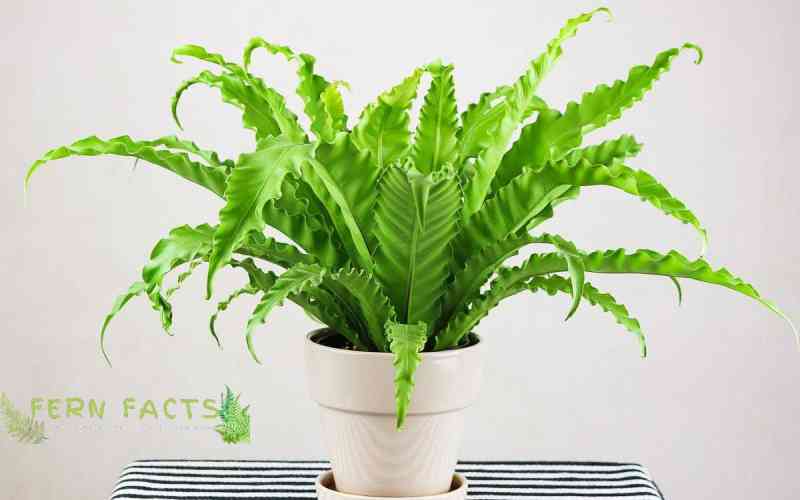
- Botanical name: Asplenium nidus
- Plants: evergreen
- Native range: southeastern Asia, eastern Australia, Hawaii, India and eastern Africa
- Shade requirements: partial to full shade
- Height: around 1 m
- Soil: alkaline or neutral, moist and well drained
Bird’s nest fern which you can plant in your clay soil. These plants are very common in southeastern Asia, eastern Australia, Hawaii, India, and eastern Africa.
These species’ fern fronds are almost similar to banana leaves. They are the evergreen plants which means they will have fronds throughout all the seasons of the year and this will also not go under the dormancy stage.
These nest fern plants also require partial or fully shaded places with warm and humid places to flourish. This nest fern can also grow well in clay soil under an ideal moisture level.
Maidenhair Spleenwort
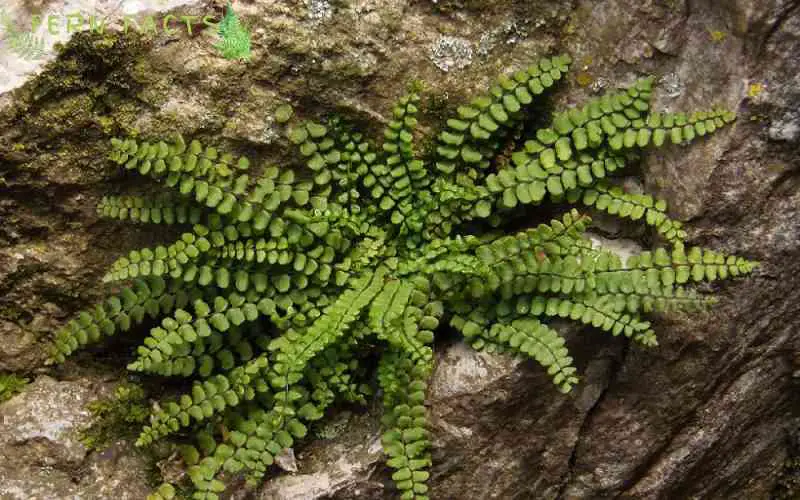
- Botanic name: Asplenium trichomanes
- Plants: Evergreen
- Native range: mount regions, temperate and subarctic areas
- Shade requirements: Full or partial shade
- Height: up to 0.3 m
- Soil: neutral or alkaline and moist, well-drained.
Maidenhair spleenwort ferns are small evergreen ferns that are widely spread in mountain regions.
Their natural habitats are rocky habitats like cliffs, slopes, walls, and mine waste with several variations remaining worldwide.
Since they prefer neutral alkaline soil that’s why they are one of the best ferns to grow in this soil. They need partial to full shade to thrive. Similarly, they can tolerate -20°C or -4 °F hardiness.
These ferns also gained the Royal Horticultural Society Award of Garden Merit because of their unique adaptation.
Christmas Ferns

- Botanical name: Polystichum acrostichoides
- Plants: Evergreen
- Native range: North America
- Shade requirements: Full or partial shade
- Height: up to 1 m
- Soil: neutral or alkaline and moist, well-drained
Christmas ferns are evergreen plants that are mostly native to North America including Nova Scotia, Florida, and Texas.
These ferns are also leather ferns that give glossy, green fronds over the year. Generally, they are fond of shady habitats like woodlands, rocky slopes, and stream banks.
Moreover, Christmas ferns are very adaptable ferns for cultivation in the yard or the natural park or gardens. As these are evergreen plants, they are also fond of moist damp environments with filtered sunlight.
These ferns are also used as ornamental plants for gardens to make the garden look more natural.
Common Polypody Ferns
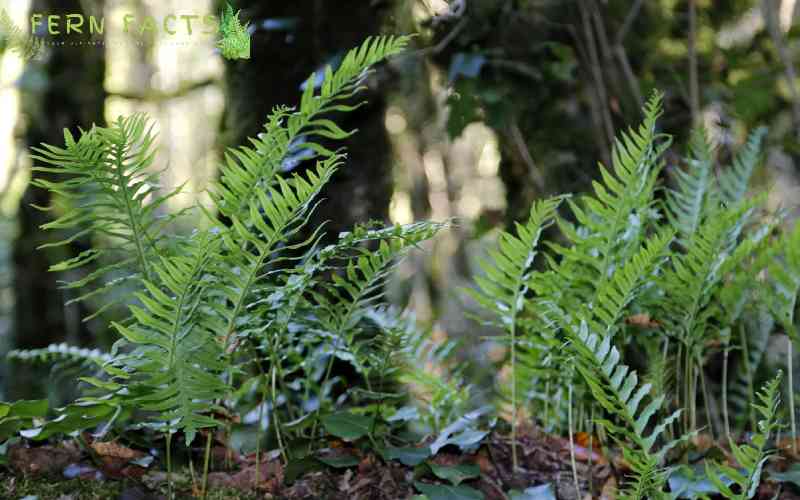
- Botanical name: Polypodium vulgare
- Plants: Evergreen
- Native range:
- Shade requirements: Full or partial shade
- Height: up to 0.5 m
- Soil: neutral or alkaline and moist, well-drained
Common polypody ferns are also evergreen ferns that belong to the Polypodiaceae family. These ferns are usually fond of shaded and semi-shaded places where moss, old walls, cliffs, and rocks are their best objects to grow actively.
These ferns are another option for alkaline soil to grow successfully because of their characteristics.
Ferns to Avoid in Alkaline Soil
Where there are some plants that can be easily grown in alkaline soil however, some ferns are not a good choice for this soil. Which are:
Cinnamon Ferns
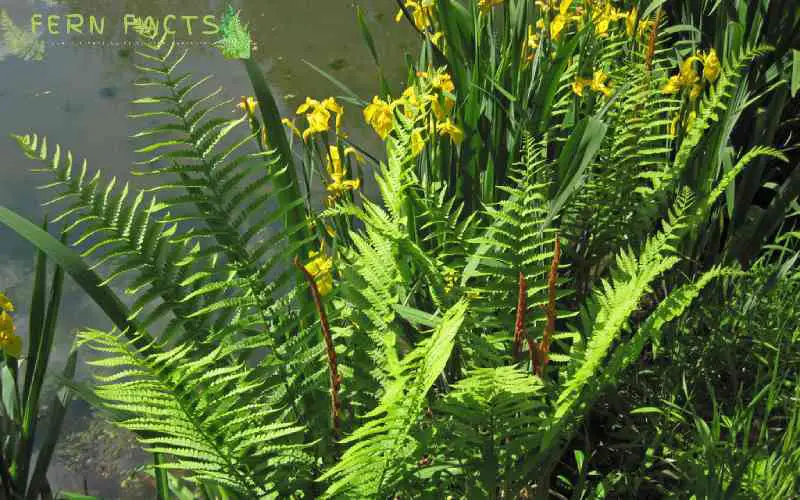
- Botanic name: Osmundastrum cinnamomeum
- Plant: Perennial deciduous
- shade: full to partial shade
- Height: around 1 to 3 ft
- Soil: acidic soil, poor drainage tolerance, moist
Cinnamon ferns have densely matted wiry roots with bright green color, foliage texture, and soft texture. These ferns are mostly local to America and eastern Asia along their natural habitats being woodlands, bogs, and swamps.
They generate their breeding by producing spores while spores can grow within a couple of weeks. As they are deciduous plants or perennial plants, they grow and shine all the summertime, and turn yellow before dying in the winter seasons.
Moreover, these ferns also contribute to medical purposes like cold remedies, gynecological issues, and snake bites as well.
Interrupted Ferns
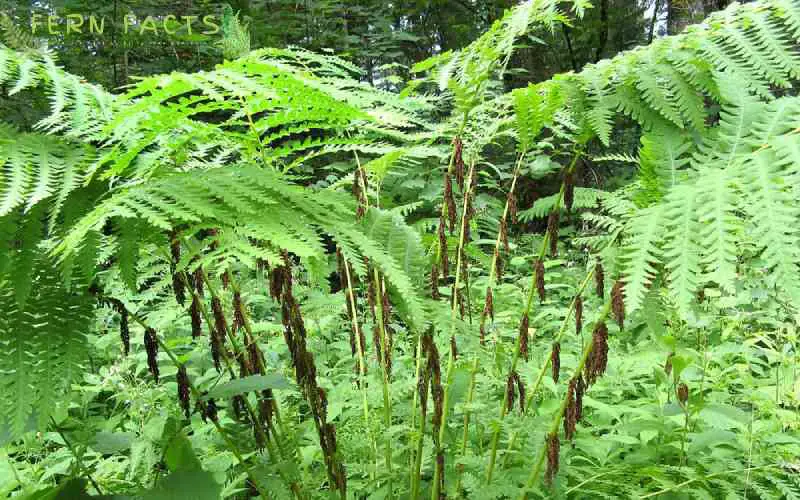
- Botanical name: Osmunda claytoniana
- Plants: Deciduous
- Native range: Eastern Asia, eastern United States, Canada.
- Shade requirements: partial shade
- Height: up to 1 m
- Soil: acidic, moist, well-drained
Interrupted ferns are deciduous plants that are widely spreadable in Eastern Asia, the United States, and Canada.
These ferns can be the least considered ferns for alkaline soil since these ferns can grow better in acidic and neutral soil with a moist atmosphere.
Therefore, alkaline soil would be poor soil for them to grow.
Oriental Chain Ferns
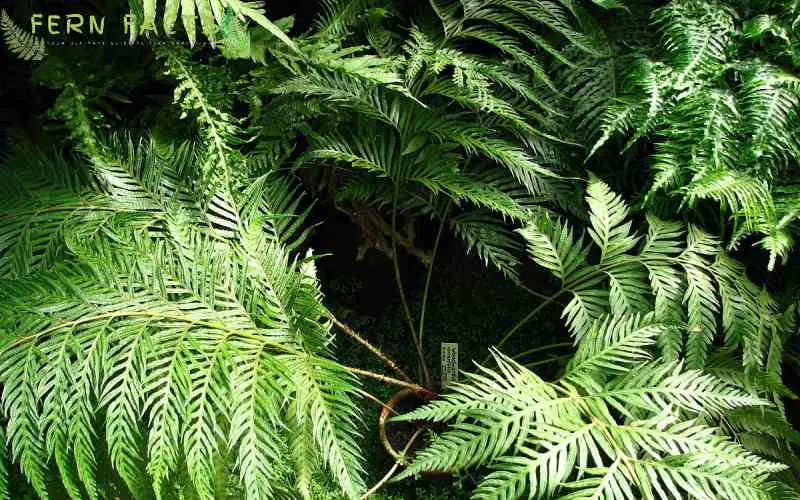
- Botanical name: Woodwardia orientalis
- Plants: evergreen
- Native range: Asia, Japan, China Philippines, Taiwan
- Shade requirements: partial shade under indirect sunlight light
- Height: up to 1.5 meter
- Soil: acid or neutral, moist, and poor drainage tolerance
Oriental chain ferns are also large ferns with slow-spreading or nonspreading habits.
These are also very adaptable ferns for your gardens or yard because these plants have an arching growth habit.
Similarly, they need a good drainage system with a balanced soil texture.
Improving Alkaline Soil
If your garden soil consists of too much alkaline soil, then you can also improve the soil conditions.
One of the best ways to improve garden soil is by increasing the acidic level in the alkaline soil has some nutrient deficiencies.
You can add one to three portions (28g-85g) of ground rock sulfur and 1 square yard (0.8 square m) of soil. By adding sulfate-based fertilizer you can tone down the soil’s alkaline properties of your garden.
This will simultaneously lower the pH level of the soil. However, if the soil is sandier or has more clay in it, then you need to mix organic matters like peat moss, compost wood chips, and sawdust with the top soil like 6 to 12 inches of soil.
You can also use a shovel or gardening tools to mix up your soil particles. Give them a couple of days to settle down with the ground then you can plant your ferns there.
You will need to remix all the particles or compost once or twice a year. It will give balanced soil compost to your garden plants. This organic addition will also hold the soil nutrition along with the water-holding capacity of the soil.
Recap
Summing up all the points together, alkaline soil contains excessive pH levels (more than 8).
Therefore, not all ferns will grow actively on this type of soil. Therefore, ferns like Hart’s tongue ferns, bird’s nest ferns, maidenhair ferns, and Christmas ferns are the best suitable ferns that can grow in this type of soil.
Alternatively, ferns like cinnamon ferns interrupted fens, and oriental ferns are the least considered ferns for alkaline soil because they prefer acidic soil to grow and thrive.
However, by using sulfate, organic matter you can enrich your alkaline soil’s quality which will give you healthy ferns in your garden yard.


